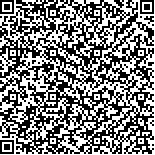| 本文已被:浏览次 下载次 |

码上扫一扫! |
|
|
|
| Mechanism analysis for self-oscillation pulse particle jet based on automatic fluid sucking from annulus |
|
LEI Peng1, NI Hong-jian1, MA Lin1, WANG Rui-he1, WANG Jian-jun2
|
|
(1.School of Petroleum Engineering in China University of Petroleum, Qingdao 266580, China;2.College of Chemistry & Chemical in China University of Petroleum, Qingdao 266580, China)
|
| Abstract: |
| Based on the existing technology of pulse particle jet assisted oil well drilling, a method using the hydraulic power in annulus to modulate the pulse particle jet was proposed to increase the penetration rate. The sand or metal particles in annulus can be automatically sucked into a modulating component or chamber that has self-priming and self-oscillation functions to generate pulse particle jet. The mechanisms of the process and its influencing factors were studied by numerical simulation. The results show that with the increase of the ambient pressure, particle diameter, particle density and pump pressure, the residence time of particles in the self-oscillation chamber can be shorted and their moving trajectory is straighten out gradually. The exit velocity of the particles increases with the increase of the ambient pressure, particle diameter and pumps pressure, but increases firstly and then decreases with the particle density increasing, so there is an optimum particle density. The results indicate that the modulated pulse jet technique is plausible in principle and can form an important basis for the improvement of the drilling technology. |
| Key words: particle jet penetration rate self-oscillation odulation method numerical simulation |
|
|